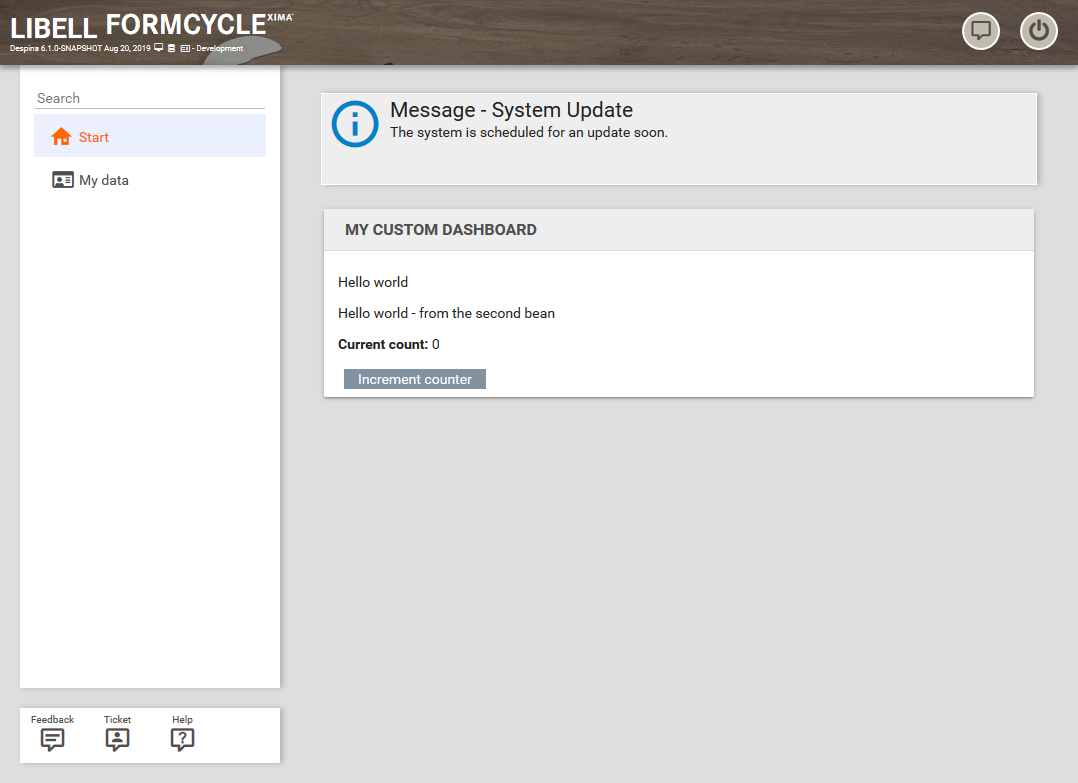IPluginClientDashboard
Interface IPluginClientDashboard
The interface for client dashboard plugins. This type of plugin lets you add a custom dashboard page to the system. It is possible to install multiple dashboard plugins at the same time. For each Rolle, an administrator may choose either the default dashboard, or one of the installed plugin dashboards. Each user with that role will then see that dashboard.
A client dashboard plugin consists of an XHTML page and a managed bean for that XHTML page, see {{jpath path="de.xima.fc.plugin.interfaces.backend.IPluginClientDashboardCustomGUIBean/}} for further info. If a plugin dashboard is set, the XHTML page is shown instead of the normal dashboard. Please note that you cannot change the layout frame (the menu bar to the left and the top bar), but only the main content of the dashboard page.
Interface IPluginGenericCustomGUI
This interface is implemented automatically by a client dashboard plugin and contains the following additional methods.
Method signatures
Iterable<Class> getUnmanagedBeans()
URL getXhtmlView()
public URL getXhtmlView() {
return getClass().getResource("/path/to/view.xhtml");
}
Interface IPluginClientDashboardCustomGUIBean
The interface for the unmanaged bean used by the client dashboard. It provides some common functionality. You should have your own bean class extends the abstract class DemoClientDashboard, it implements most of the required methods and reduces the overhead in creating new beans.

